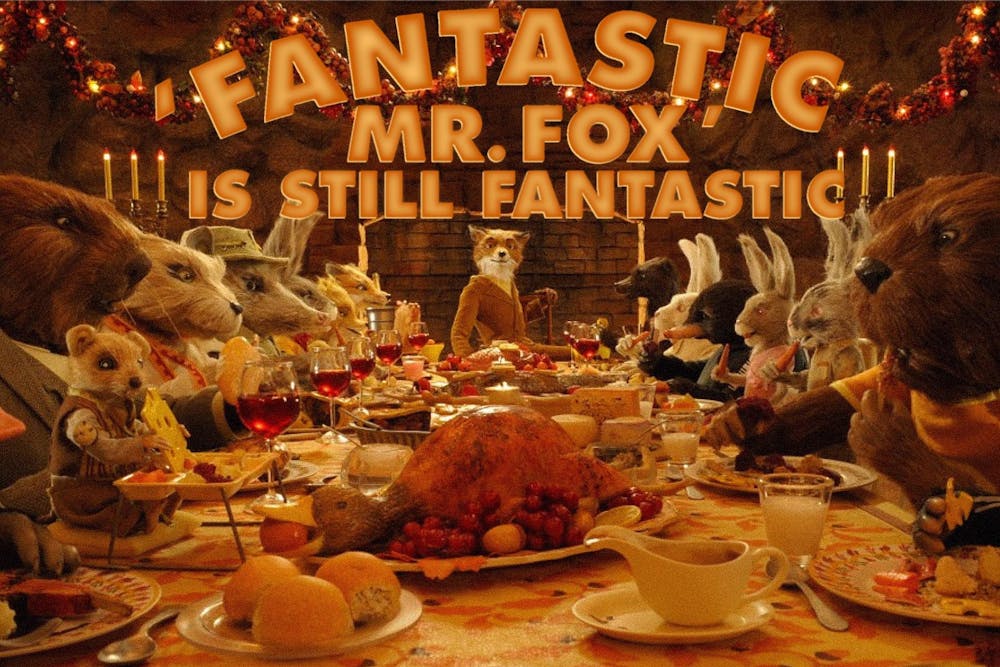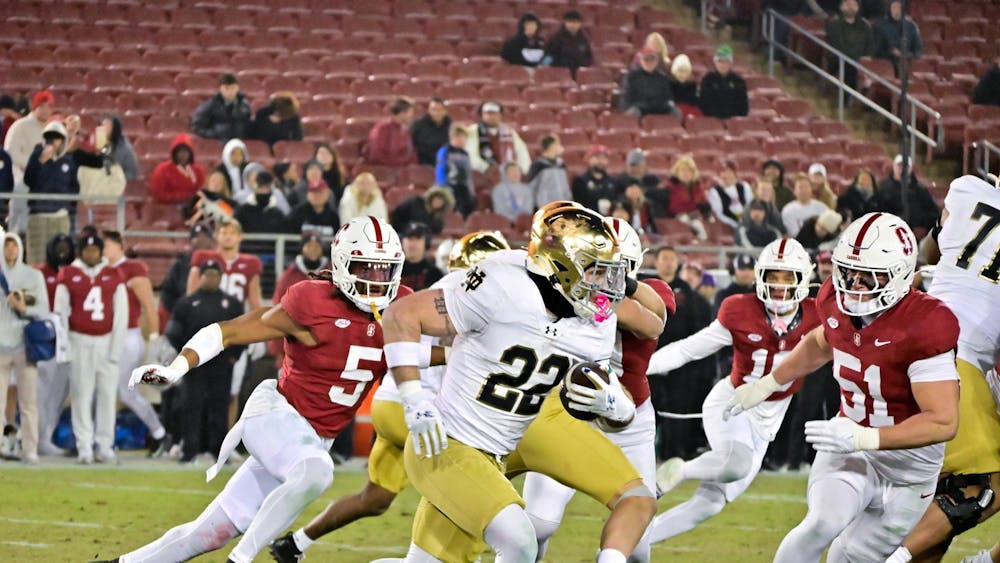I am an avid fan of director Wes Anderson. His style, soundtracks, dialogue and stories are incredibly unique and set him apart from all other filmmakers in the industry. Anderson has always gone against the conventions of modern filmmaking, taking inspiration from the trends of the past while forging his own identity.
His films are often quirky, stylized tragicomedies, but in 2009, he released “Fantastic Mr. Fox,” an animated feature that broke his pre-established formula. Based on Roald Dahl’s book of the same name, Anderson’s approach to the source material is one of the greatest ever adaptations from book to screen.
What makes “Fantastic Mr. Fox” so special and beloved? To begin, the voice cast is fantastic, starring George Clooney and Meryl Streep as Mr. and Mrs. Fox along with Anderson’s regulars: Willem Dafoe, Owen Wilson, Bill Murray, Jason Schwartzman and Adrien Brody. Further, Anderson’s signature pithy dialogue translates well to stop motion voice acting and blends with Dahl’s story.
From a technical standpoint, the film is a marvel. The sets and more than 500 puppets are intricately detailed, and the photography alone took nearly 12 months. Originally, Henry Sellick was lined up to collaborate on the project, but he had to leave to direct another animated movie: “Coraline.” Upon its initial release, “Fantastic Mr. Fox” was not an immediate success, but as with most Anderson films, it has gained a cult following over the years.
Anderson’s visual style is instantly recognizable and his films are beautiful to watch from an artistic perspective. His shots and sets are meticulously symmetrical. His films are dynamic as he implements whip pans, tracking and trucking shots. Each movie features a guiding color palette interwoven throughout the set and costumes. “Fantastic Mr. Fox” is visually composed with oranges, reds, browns and yellows, giving it an autumnal aesthetic. Every shot of the movie features some shade of orange to really enforce this vibe. Anderson’s films are often called “story books come to life,” and I feel this is an apt description. They have an otherworldly, almost whimsical, quality to them.
Musically, Anderson has a nostalgic style, featuring selections from the 1960s and 1970s. The instrumental score for “Fantastic Mr. Fox” was composed by Oscar winner Alexandre Desplat, a frequent Anderson collaborator. Desplat’s scores often have an upbeat and playful quality while also making room for dramatic moments as required by the story.
“Fantastic Mr. Fox” is a difficult film to categorize. It was, at release, Anderson’s first PG-rated work. (A funny running joke is that every swear word is replaced with the word “cuss.”) However, despite it being animated, I don’t think it’s a “family movie.” Families can enjoy the movie together, sure, but it has darker and more serious moments. Upon a recent viewing, I was struck by how existential and thought-provoking it is. The plot is morally ambiguous and has no clear hero. Mr. Fox is a thief, and this propels the events of the movie. At the same time, the men he steals from are deplorable in their own right. However, these heavy moments don’t prohibit younger viewers from enjoying the film. I would classify “Fantastic Mr. Fox” in the same category as Anderson’s other films: tragicomedy. It is a beautifully made movie that all ages can enjoy, but it is not itself exclusively a family movie.
Anderson’s career, I think, can be split into two halves: Wes before animation, and Wes after animation. In 2007, Anderson directed “The Darjeeling Limited,” a story about three brothers on a spiritual journey across India. One of his most emotionally heavy films, it is a prime example of “Wes before animation.” It was mostly filmed on location, which maintains a more grounded feel, and it features his hallmark camera movements and framing, but not to an extreme degree. The same can be argued for “The Royal Tenenbaums” and “Rushmore”; they are undeniably Wes Anderson, but they feel different from his most recent pictures.
Post “Fantastic Mr. Fox”, Anderson’s films have left all grounding in reality behind. He has started using miniature sets and models in his live action movies, even when they don’t look particularly realistic (e.g., “The Grand Budapest Hotel”). “The French Dispatch” features incredibly intricate movements of the set, camera and actors. One could take a metronome and find the tempo of several scenes where the actors are choreographed to move precisely, almost like puppets. This is in no means a bad thing! I absolutely love Anderson’s most recent pictures — they feel like paintings come to life.
“Fantastic Mr. Fox” is one of Wes Anderson’s greatest and most influential films. From the voice acting to the visual aesthetic, it has it all. Thanks to its vast demographic appeal, it has cemented itself as an animated classic.










